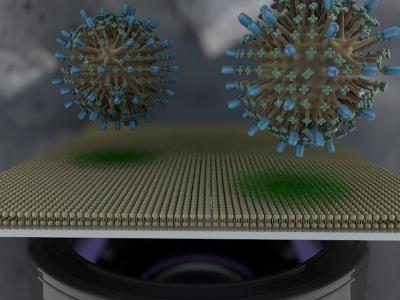ITHACA, N.Y. – A multi-organizational collaboration by scientists at Cornell, Cambridge, and Stanford universities has led to a new mechanism which may make COVID-19 drug testing both faster and safer. The innovative technology, a cell membrane on a microchip, can mimic any type of human cell and allows scientists to continuously monitor how drugs and infectious agents (like viruses or bacteria) interact with cells.
The device has the same structure and function as a normal cell membrane, but it doesn’t need to be kept alive in the same way. “This type of screening is typically done by the pharmaceutical industry with live cells, but our device provides an easier alternative,” explains senior author and Cambridge researcher Róisín Owens in a statement. “This method is compatible with high-throughput screening and would reduce the number of false positives making it through into the R&D pipeline.”

The microchip part of the device records activity of the cell membrane using optical and electrical recording methods. This allows scientists to observe changes in membrane properties in response to outside manipulations over extended periods of time.
COVID-19 drug testing made easier
To create the device, scientists at Cornell first optimized a method of extracting cell membranes from living cells. Then, through collaborations with researchers at Cambridge, they developed a method of transferring the membranes to the chip. Stanford scientists then optimized the chip to monitor changes in the cell membrane.
The researchers explain that the device can be created in arrays (i.e., sets of multiple chips) to make it easier and faster to test multiple drugs or other manipulations in a short period of time. Moreover, the device can make it safer for researchers to study SARS-CoV-2, the virus that causes COVID-19.
“With this device, we are not exposed to risky working environments for combating SARS-CoV-2. The device will speed up the screening of drug candidates and provide answers to questions about how this virus works,” said co-first-author and Cornell researcher Han-Yuan Liu.
Looking ahead
In the future, the research teams plan to scale up production of the devices at Stanford and automate integrating membranes with chips.
“This project has merged ideas and concepts from laboratories in the UK, California and New York, and shown a device that works reproducibly in all three sites,” said lead researcher and Stanford Professor Alberto Salleo. “It is a great example of the power of integrating biology and materials science in addressing global problems.”
The study is published in the journal Langmuir.
Like studies? Follow us on Facebook!
